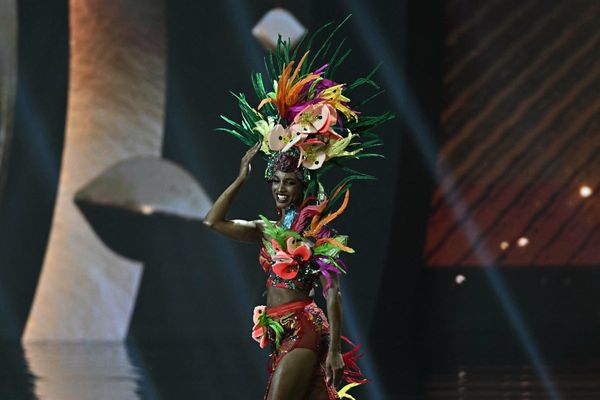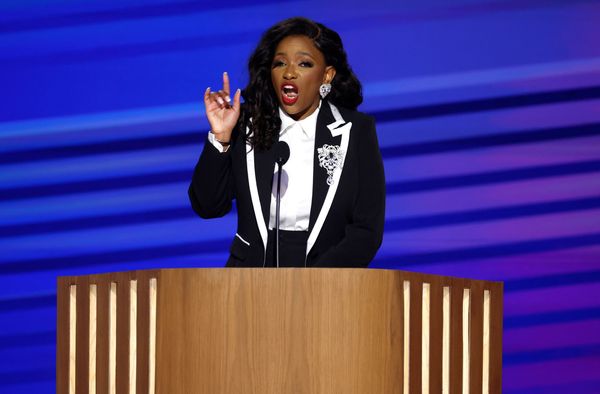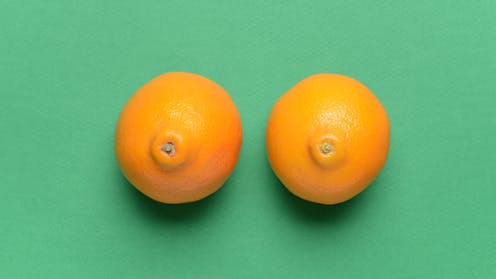
We’re all born with mammary glands – better known as breasts. These are made of glandular tissue, fat and the ligaments that attach them to our chest wall.
For roughly half of us – those born biologically female – our breasts will change dramatically in size and shape at puberty. Size is largely genetic: genes explain 56% of the differences in breast size between people. But breasts may also change during pregnancy and breastfeeding, and can be affected by age, diet and exercise.
So, what about bras?
There are a lot of popular beliefs about when, how and what kind of bra to wear to stop your boobs sagging or make them grow. But is there any evidence behind these?
Before we myth bust, let’s get one thing straight: breasts are sisters, not twins. So, while your bra is symmetrical, it’s normal your breasts aren’t.
1. Do bras give you cancer?
No, there is no evidence to show wearing a bra is linked to developing breast cancer.
This myth seems to come from the idea bras can block lymphatic drainage, but there is no evidence to support this or any other cancer-causing mechanism.
One study, involving more than 1,000 women aged 55 to 74, compared those diagnosed with breast cancer to those without. Researchers found no aspect of bra-wearing – including how many hours per day and whether it had an underwire – was linked to breast cancer risk in post-menopausal women.
Risk factors for breast cancer are well established and include being female, over 50 years old, having a family history of breast cancer, and lifestyle factors such as inactivity and drinking a lot of alcohol.
2. Does sleeping in a bra stop your boobs growing?
No. Wearing a bra – day or night – won’t affect their size.
Breasts grow thanks to hormones, which are regulated by your brain. Nutrition and overall health can also play a role; for example, if you lose body fat, your breasts may also shrink.
There is no evidence to suggest sleeping with a bra has a negative effect on their growth.
So, it comes down to comfort. Women with larger breasts may find a bra reduces how much their breasts move during sleep, while others may find it uncomfortable.
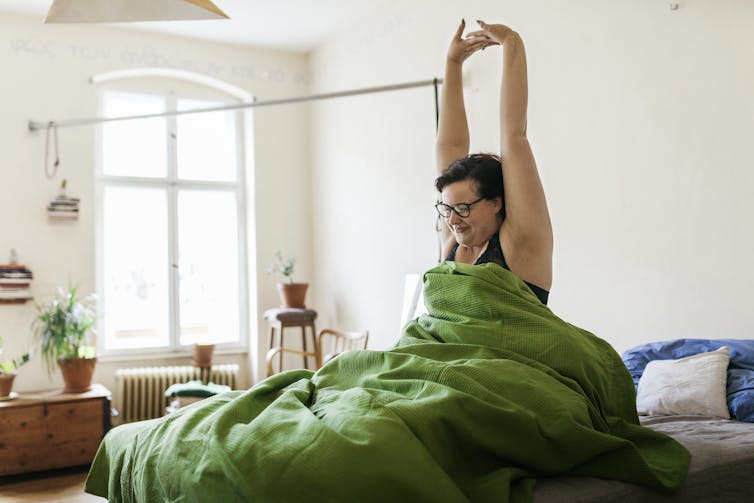
3. Will wearing a bra stop my breasts sagging?
No.
Gravity affects everyone, meaning breasts will sag as we age. But larger breasts are affected more by gravitational forces pulling them towards the ground. This may stretch the skin and ligaments over time, making them sag more.
Being pregnant also usually makes your breasts grow bigger and this – along with milk production affecting their composition – can increase strain, potentially stretching skin and ligaments.
Some other factors can also increase this effect, including being older, having a higher body mass index, having multiple pregnancies and smoking. Even surgically reduced breasts sag more with smoking.
However, breastfeeding does not appear to make breasts saggy.
So, while we don’t have evidence to show bras can prevent natural sagging, a well-fitted one may offer support and comfort.
4. Should you only exercise in a sports bra?
Yes. Breasts and bras move with your body. The pull of gravity on your breasts has the potential to cause damage by straining the skin and breaking collagen fibres which support the structure of the breast.
Again, this is more likely to affect women with larger breasts. Researchers found when women with D-cups exercised without a sports bra, their breasts moved up and down about 4 centimetres when walking. When they ran, their breasts bounced about 15cm – the height of your smartphone.
High-impact sports bras are the most effective at reducing breast movement and discomfort, compared to crop tops and everyday bras.
So exercising in a bandeau or “boob tube” bra – like these Roman women in a 4th century mosaic – is not recommended.
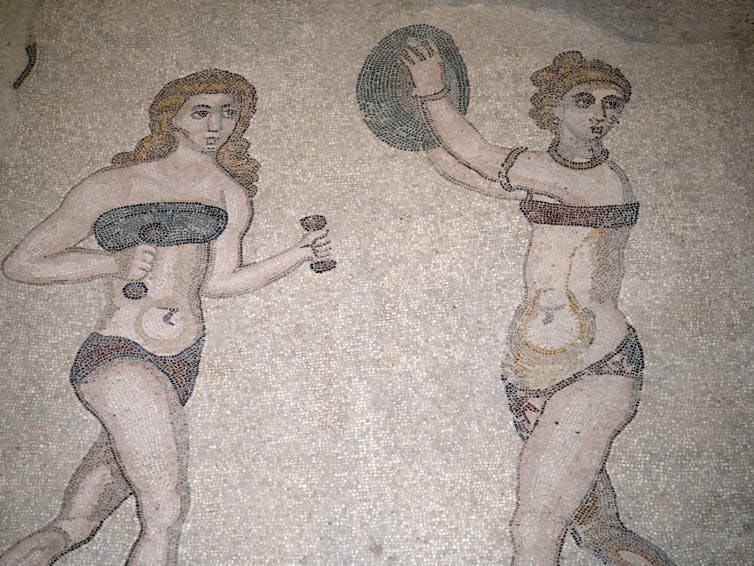
5. Can underwire bras injure your boobs?
Yes. It’s possible for underwires from bras to escape their casing and scratch or dig into your breast skin, but this has not been studied.
However, one 2023 study found women who wear underwire bras after breast implants are 2.7 more times likely to have them rupture. This suggests underwire bras can put more pressure on breasts.
One case study in 2014 suggested a tight underwire bra was responsible for blocking and inflaming breast veins, causing pain and breast tissue to harden.
However we don’t have evidence this condition is common, and it can be avoided by wearing correctly fitted bras. If you have breast pain or notice unusual lumps or changes, speak to a doctor.
6. Should I get fitted if I have small breasts?
Yes. Wearing a poorly fitting bra can cause unnecessary discomfort, even if you have small breasts.
One study of 309 Australian women, with bra cup sizes ranging from A to K, found only one in ten were wearing a bra that fitted correctly. This affected women with small, medium, large and extremely large breasts equally.
Most had an incorrectly fitting backband (either too loose or too tight) and the wrong cup size. However women with smaller breasts were more likely to have badly fitting bra straps while women with medium or larger breasts were more likely to have ill-fitting front bands and underwire.
A 2018 review of evidence about women with benign but unidentified breast pain (mastalgia) also found most experienced relief when offered bra-fitting advice and reassurance from their GP.
Amanda Meyer is affiliated with the Australian and New Zealand Association for Clinical Anatomists, the American Association for Anatomy, and the Global Neuroanatomy Network.
Monika Zimanyi is affiliated with Global Neuroanatomy Network.
This article was originally published on The Conversation. Read the original article.




